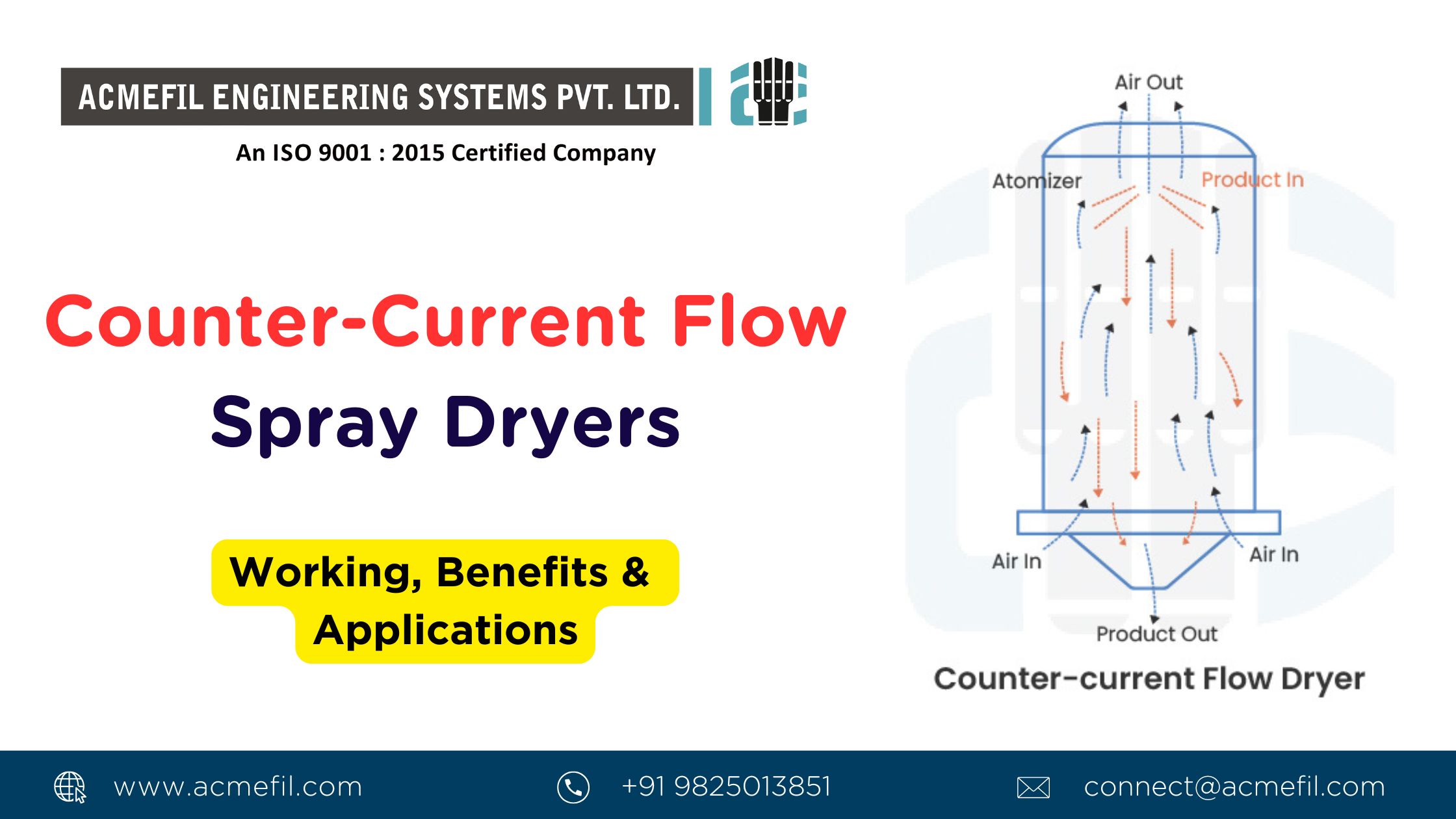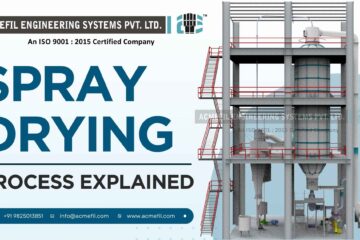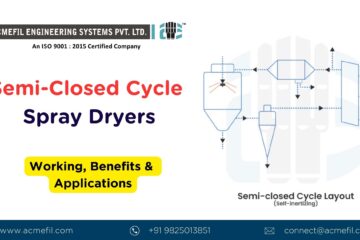Spray drying is a transformative technique that converts liquid feed into dry, powdery products by evaporating moisture. Among the various spray dryer designs, the Counter-Current Flow Spray Dryer is a standout option for its high energy efficiency and ability to handle robust materials. If you’re dealing with products that require intensive drying without concern for heat sensitivity, this type of spray dryer could be the ideal solution.
In this blog, we will explore:
- What makes Counter-Current Flow Spray Dryers unique?
- Their working principle.
- Key benefits and applications.
- Practical tips for optimal use.
Let’s dive into the details to understand why Counter-Current Flow Spray Dryers are indispensable in many industries.
What is a Counter-Current Flow Spray Dryer?
A Counter-Current Flow Spray Dryer features a distinct design where the spray of liquid feed and the hot air flow in opposite directions. Typically, the atomizer is positioned at the top of the drying chamber, and hot air enters from the bottom.
This layout maximizes the drying process by exposing the driest particles to the hottest air, making the design particularly suitable for durable products that can withstand higher temperatures.
How Does a Counter-Current Flow Spray Dryer Work?
- Feed Introduction: The liquid feedstock is atomized into fine droplets through a nozzle or rotary atomizer at the top of the drying chamber.
- Hot Air Inflow: Heated air is introduced at the bottom of the chamber and flows upward.
- Evaporation Process: The air’s temperature rises as it comes into contact with the already-dried particles, ensuring maximum energy transfer and rapid evaporation.
- Separation of Product: Dried particles are collected at the bottom, while residual air exits through exhaust systems like cyclones or filters.
Benefits of Counter-Current Flow Spray Dryers
1. High Energy Efficiency
The counter-current design ensures effective heat utilization. The driest particles absorb the maximum heat, resulting in lower overall energy consumption compared to other designs.
2. Ideal for Non-Heat-Sensitive Products
Since this dryer exposes the product to higher temperatures, it is perfect for robust materials like chemicals, detergents, and construction materials.
3. Enhanced Moisture Removal
The extended exposure to heat allows for deeper moisture evaporation, delivering products with extremely low moisture content.
4. Consistent Particle Quality
By maintaining precise air and feed flow rates, counter-current dryers produce uniform particle sizes and ensure consistent product quality.
5. Durable Design
These dryers are built to handle abrasive or heavy-duty materials, making them suitable for demanding industrial environments.
Applications of Counter-Current Flow Spray Dryers
Counter-Current Flow Spray Dryers are widely used in industries that require intensive drying for robust and durable products.
1. Chemical Industry
- Drying of detergents, catalysts, and fertilizers.
- Ensures uniform product composition and low residual moisture.
2. Construction Materials
- Drying of cement powders and additives.
- Produces fine, evenly distributed particles for construction applications.
3. Industrial Minerals
- Effective for drying materials like silica, gypsum, and clay.
- Provides consistent particle size for enhanced usability.
4. Food Industry
- Suitable for drying non-heat-sensitive items like starch and salt.
5. Pharmaceuticals
- Used for drying certain types of APIs and excipients that can tolerate high heat.
Expert Tips for Optimizing Counter-Current Flow Spray Dryers
- Regulate Airflow and Temperature
Monitor the air inlet temperature to avoid overheating products. - Maintain Atomizer Efficiency
Regular cleaning and calibration of atomizers ensure consistent spray patterns and droplet sizes. - Optimize Feedstock Characteristics
Ensure feed viscosity and temperature are within recommended ranges for uniform drying. - Use High-Quality Cyclones and Filters
Invest in efficient separation systems to maximize powder recovery and minimize waste. - Routine Maintenance
Inspect key components like nozzles, chambers, and separators regularly to prevent operational disruptions.
Comparing Counter-Current Flow Spray Dryers to Co-Current Flow Spray Dryers
| Feature | Counter-Current Flow | Co-Current Flow |
|---|---|---|
| Direction of Air and Spray | Opposite | Same |
| Ideal For | Non-heat-sensitive materials | Heat-sensitive products |
| Energy Efficiency | High | Moderate |
| Moisture Removal | Intensive | Moderate |
| Applications | Chemicals, construction materials | Dairy, food, and pharmaceuticals |
Why Choose Counter-Current Flow Spray Dryers?
Counter-Current Flow Spray Dryers offer unparalleled efficiency for industries requiring robust drying solutions. Their design ensures maximum moisture removal and optimal energy use, making them a cost-effective and reliable option for drying durable products.
Conclusion
The Counter-Current Flow Spray Dryer is an invaluable asset for industries handling durable, non-heat-sensitive products. Its energy efficiency, consistent particle quality, and ability to handle demanding materials make it a top choice for industrial drying processes.
Acmefil Engineering Systems Pvt. Ltd. is a trusted name in the world of spray drying technology, renowned for delivering innovative and high-performance solutions tailored to diverse industrial needs. With over two decades of expertise, Acmefil specializes in designing, manufacturing, and exporting state-of-the-art spray dryers that cater to industries such as food, pharmaceuticals, chemicals, and more. Our ISO 9001:2015-certified manufacturing facility combines advanced engineering with stringent quality control to ensure reliable, efficient, and durable products. Backed by a team of skilled engineers and a commitment to excellence, Acmefil is the preferred partner for businesses seeking customized drying solutions that optimize productivity and maintain product quality.




